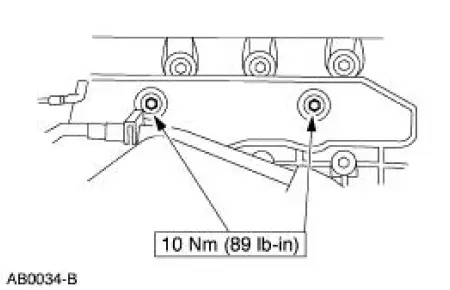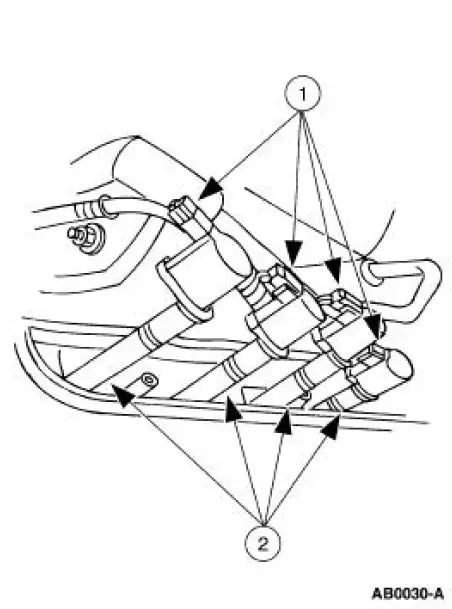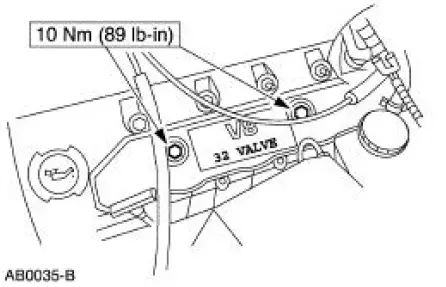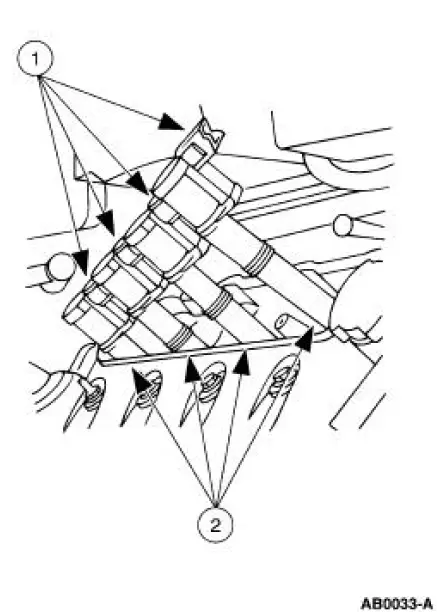Ford Mustang (1999-2004) Service Manual: Ignition Coil-On-Plug
Material
| Item | Specification |
| Silicone Brake Caliper Grease and Dielectric Compound D7AZ-19A331-A or equivalent | ESE-M1C171- A |
Removal and Installation
1. Disconnect the battery ground cable. For additional information, refer to Section.
2. Remove the air cleaner outlet pipe. For additional information, refer to Section.
3. Remove the RH ignition coil cover bolts and the cover.

4. Remove the ignition coils.
1. Disconnect the electrical connectors.
2. Remove the ignition coils.

5. Remove the LH ignition coil cover bolts and the cover.

6. Remove the ignition coils.
1. Disconnect the connectors.
2. Remove the ignition coils.

7. NOTE: Verify that the ignition coil spring is correctly located inside the ignition coil boot and that there is no damage to the tip of the boot.
To install, reverse the removal procedure.
- Apply a light coat of dielectric grease to the inside of the ignition coil boots.
 Engine Ignition (Description and Operation)
Engine Ignition (Description and Operation)
Eight separate ignition coils:
are controlled by the powertrain control module (PCM).
are mounted directly above each spark plug.
are controlled by the powertrain control module for correct fi ...
 Spark Plugs
Spark Plugs
Removal and Installation
1. Remove the ignition coil-on-plug. For additional information, refer to
Ignition Coil-On-Plug in this
section.
2. NOTE: Use compressed air to remove any foreign materi ...
Other materials:
Installation
1. Apply silicone gasket and sealant in the locations shown.
2. Install the engine front cover.
3. Install the belt idler pulleys and the bolts.
4. Connect the CMP sensor electrical connector.
5. Raise the vehicle.
6. Install the crankshaft fr ...
Purging - CII Power Steering Pump
Special Tool(s)
Vacuum Pump
416-D002 (D95L-7559-A) or
Equivalent
CAUTION: If the air is not purged from the power steering system
correctly, premature
power steering pump failure can result. This condition can occur on pre-delivery
vehicles ...
Autolamps
WARNING: In severe weather conditions, it may be necessary to
switch your headlamps on manually.
Note: If the vehicle is equipped with autolamps, it will have the
windshield wiper rainlamp feature. When the windshield wipers are
turned to low- or high-speed wi ...
